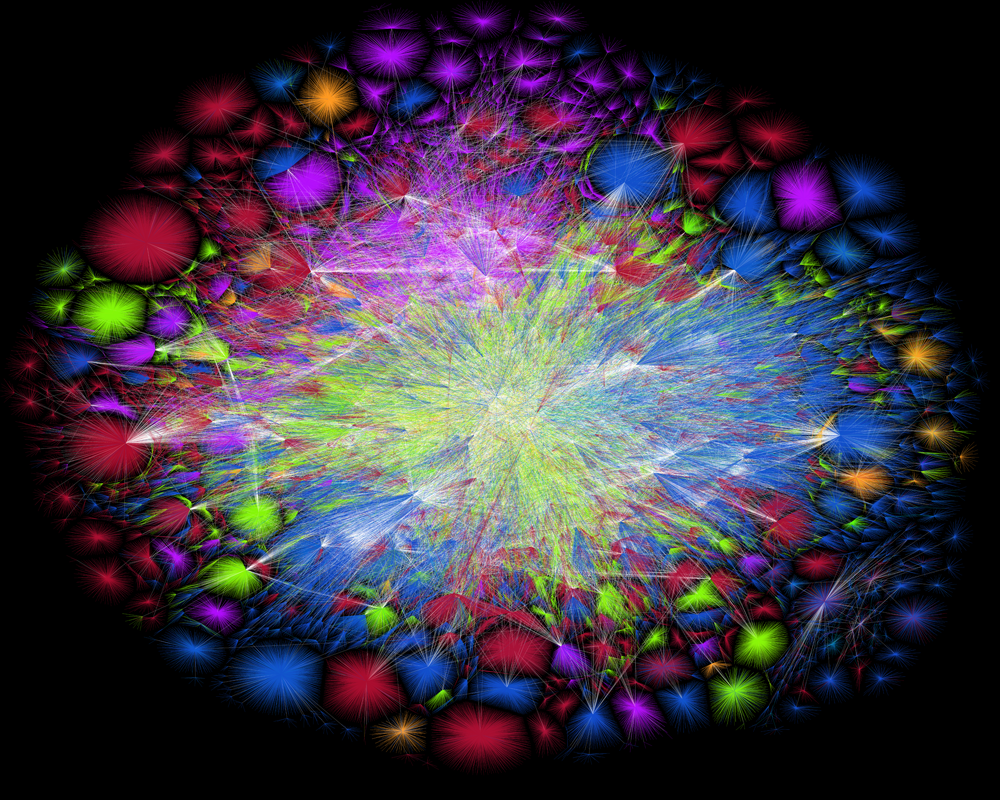
The Internet
The picture above and text above are from http://opte.org. This is a 2015 picture of the Internet. By the way, http://BILLSLATER.com , is a Class C IPv4 address, at 64.118.39.70, and is part of this map, somewhere. (This stuff is really exciting isn't it?).
The Internet Today
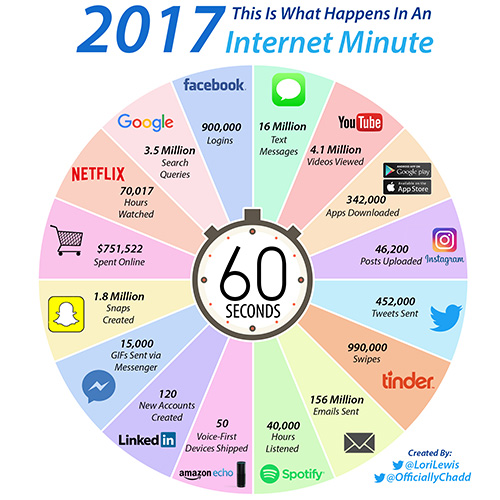
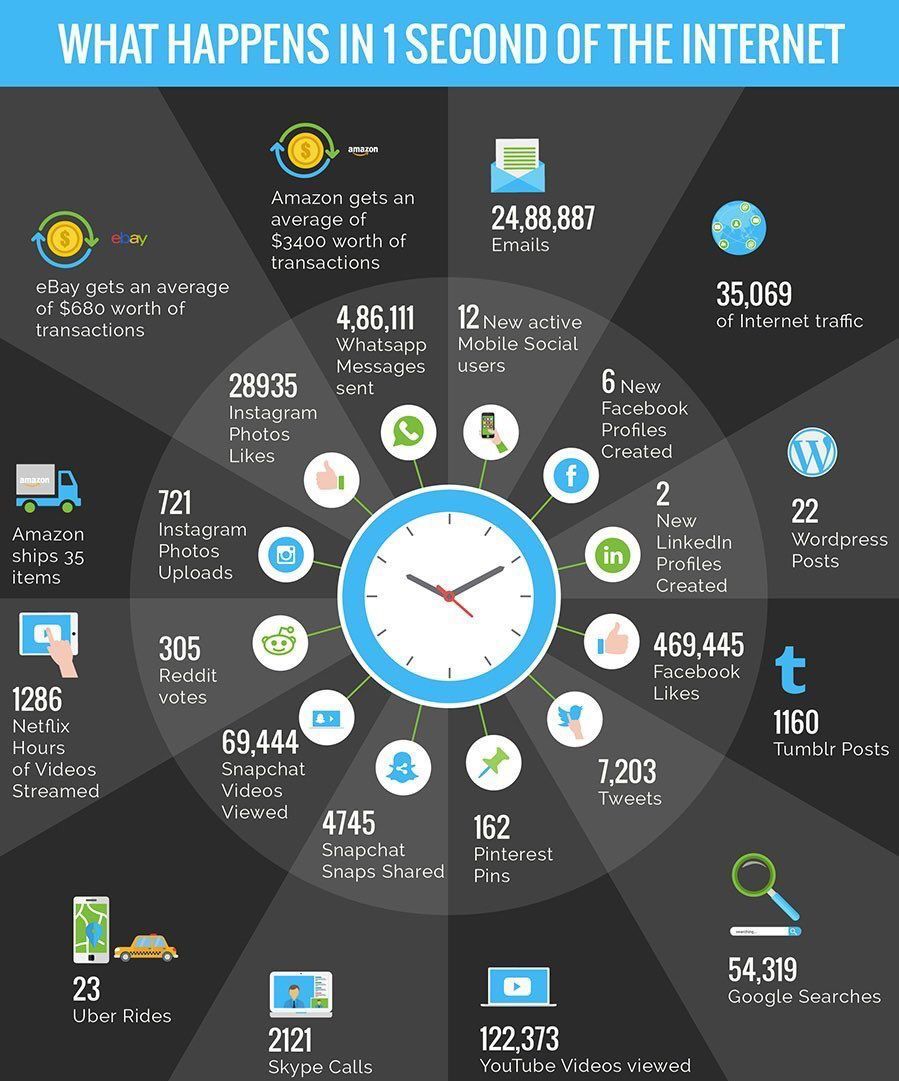
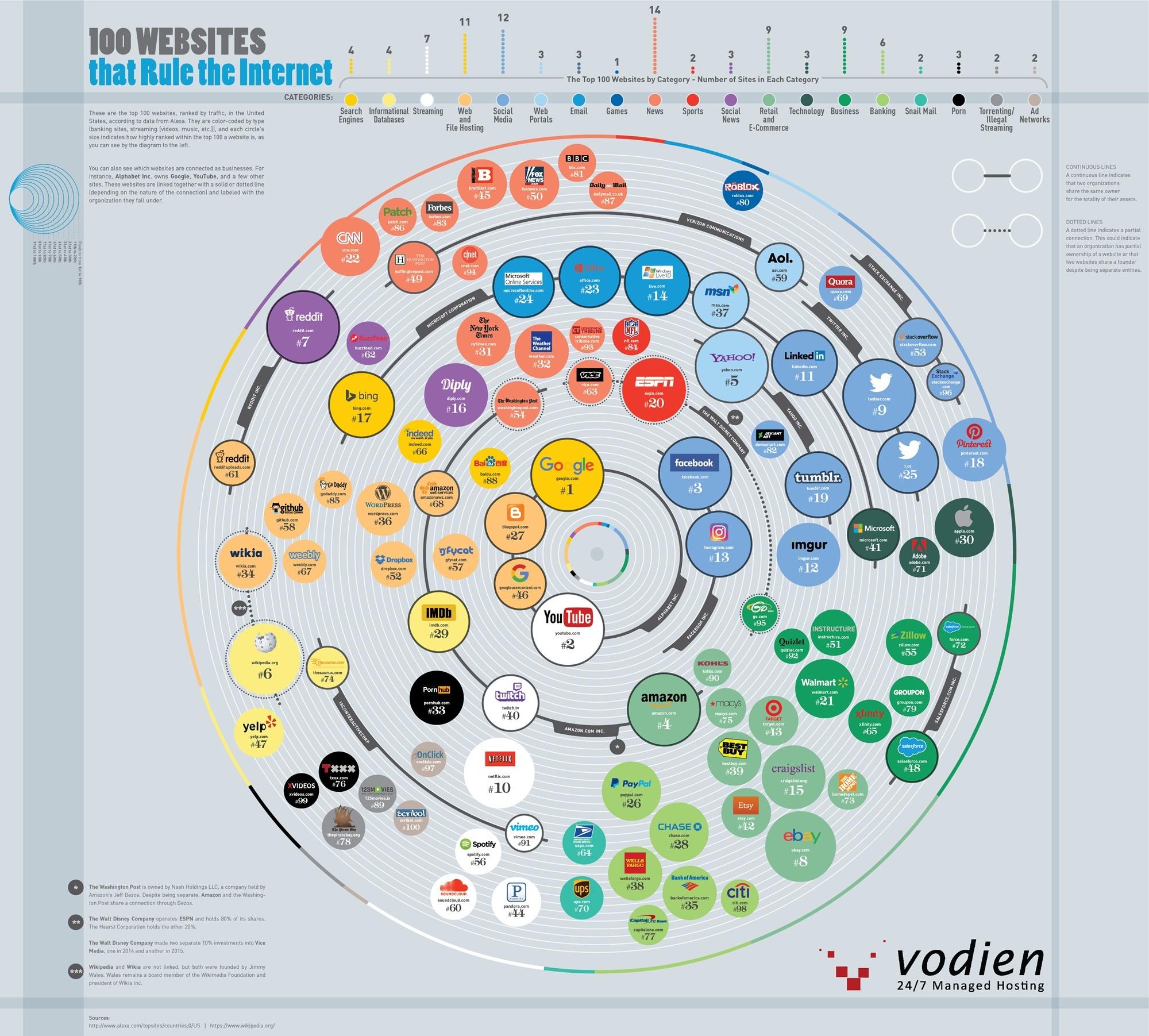
Predicting the Next 5000 Days of the Web - Kevin Kelly
Explaining the Internet
Dr. Vinton G. Cerf and Dr. Robert Kahn are TCP/IP's Co-creators: This is the link to their paper that first explained TCP/IP.
TCP/IP is the protocol that has run the Internet since 1983 years.
TCP/IP is actually two protocols that operate at different layers of the OSI Model.
TCP stands for Transmission Control Protocol. It operates at Layer 4, the Transport Layer.
IP stands for Internet Protocol. It operates at Layer 3, the Internet Layer.
TCP/IP is also a large suite of network related
protocols that include TCP, IP, UDP, ARP, etc.
The 1974 paper, A Protocol for Packet Network Interconnection, by Dr. Vint Cerf
and Dr. Robert Kahn, at this link, presented about five years after the ARPANET
was created, first described the TCP/IP protocol.
http://www.cs.princeton.edu/courses/archive/fall06/cos561/papers/cerf74.pdf
Later, on January 1, 1983, the ARPANET became the
Internet when all the nodes adopted the TCP/IP protocol for their standardized
communication.
Without an Internet, there would be no World Wide Web, and there would certainly
be no Facebook, Google, eBay, AMAZON.com, YouTube.com, CNN.com, etc. In
fact, the computer world would probably look like it did prior to the Internet
http://billslater.com/iso27001
Other important articles by Dr. Vinton Cerf:
Internet History - How the Internet Came to Be
Interview with Dr. Cerf in April 2012
Here's some very important TCP/IP Facts from Douglas Comer's book, The Internet Book:
What You Should Know About TCP/IP
The Internet exists today because of technical software and communications accomplishments made during the late 1970s and early 1980s.
The basic TCP/IP technology has accommodated growth and changes that the
original designers did not imagine.
Computers now operate over 2,000 times faster than the computers that existed
when TCP/IP was first built.
Despite an 2000% increase in the speed of the central Internet WAN, TCP/IP
protocols have not changed; the same design continues to operate correctly at
the higher speeds.
IP provides flexibility because it does not demand much from the network
hardware and operates on almost any mechanism that can send bits from one
location to another.
It accommodates many types of hardware because it makes almost no assumption
about the underlying network hardware.
Because TCP/IP standards documents (RFCs) specify the exact way to send IP
datagrams on a given type of network, computers and routers from multiple
vendors always agree on the details.
TCP and IP work together to provide reliable data transmissions.
TCP handles communication problems that IP does not handle.
Because it constantly monitors conditions on the Internet and automatically
adapts, TCP makes reliable communications possible even though the Internet
experiences temporary congestion.
TCP/IP protocol software and the Internet were designed by talented, dedicated
people.
The Internet was a dream that inspired and challenged the research team.
Researchers were allowed to experiment, even when there was no short-term
economic payoff. Indeed, Internet research often used new, innovative
technologies that were expensive compared to existing technologies.
Instead of dreaming about a system that solved all problems, researchers built
the Internet to operate efficiently.
Researchers insisted that each part of the Internet work well in practice before
they adopted it as a standard.
Internet technology solves an important, practical problem; the problem occurs
whenever an organization has multiple networks.
In Summary
The Internet represents an incredible technical accomplishment. Although careful
planning and attention to detail contributed to its success, agreement among
researchers to demonstrate a practical, working system forced them to
demonstrate ideas and eliminate weaknesses.
More on the Internet Protocol - IPv4
Visit this link: https://goo.gl/3K5G8e
IPv6 - The Internet Protocol of the Future of the Internet


Comparing the Number of IPv4 Addresses to the Number of IPv6 Addresses

To Migrate or Not to Migrate to IPv6


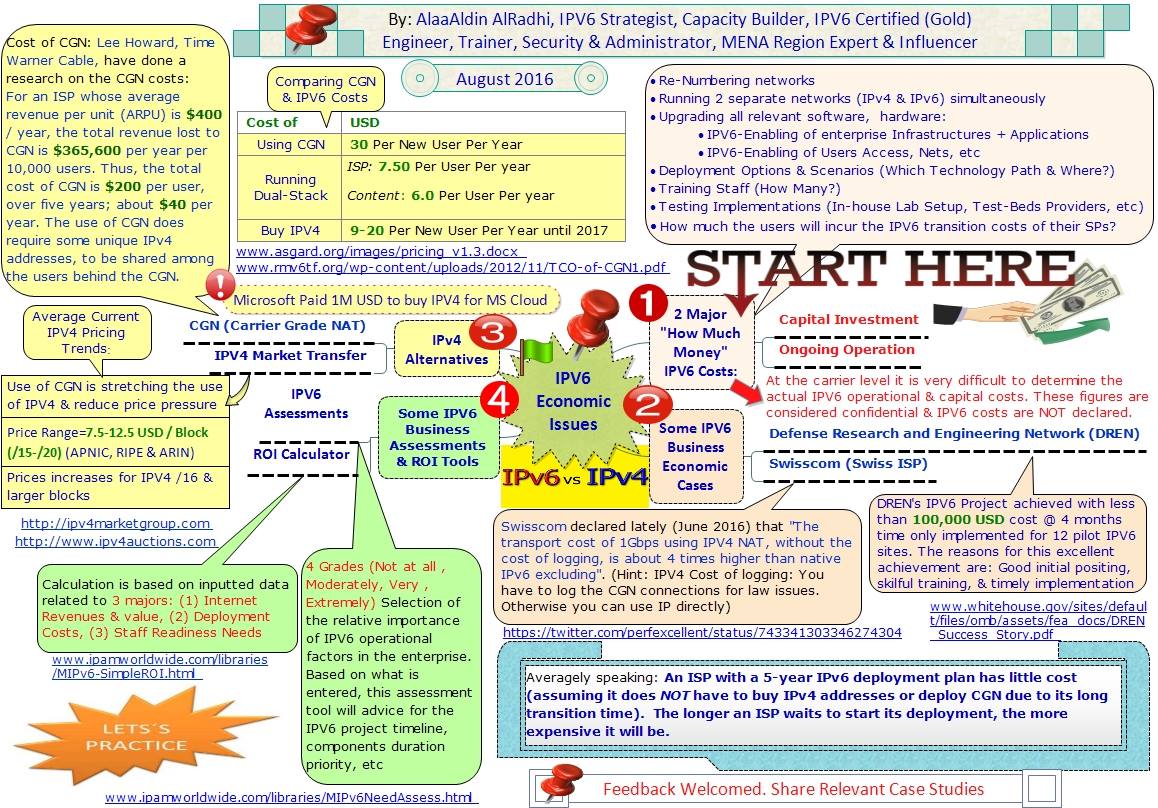
More IPv6 Information
Earn an IPv6 Certification - for Free from Hurricane Electric
IPv6: Politics of the Next Generation Internet -- A Doctoral Dissertation by Laura DeNardis
IPv6 at Virginia Tech -- History and Lessons Learned
Evaluating IPv6 Adoption in the Internet
The Real Internet Pioneers
Dr. Claude Shannon
Claude Shannon - The Father of the Modern Information Age. He first used Boolean Algebra to describe digital circuits. He won the Nobel Prize for his Masters Thesis in 1939, a paper titled, "A Symbolic Analysis of Relay and Switching Circuits” He also coined the term "bits", and today, his formulas are still used to describe the transmission of data in networks. The Founders of the ARPANET and the Internet considered this man a giant of the computer age, and used his ideas in their creations. Note: Most of the Founders agree that Dr. Shannon's work was essential to the beginning of what became the Internet. For more information, check him out at http://en.wikipedia.org/wiki/Claude_Shannon


Rest in Peace, Robert Taylor, 1932 - 2017
He managed to build the ARPANET with his Team for $1 million.
.png)
1. Dr. Leonard Kleinrock, Paul Baran, and Larry Roberts
2. Dr. Vinton G. Cerf and Dr. Robert Kahn - TCP/IP Co-creators
This is the link to their paper that
first explained TCP/IP.
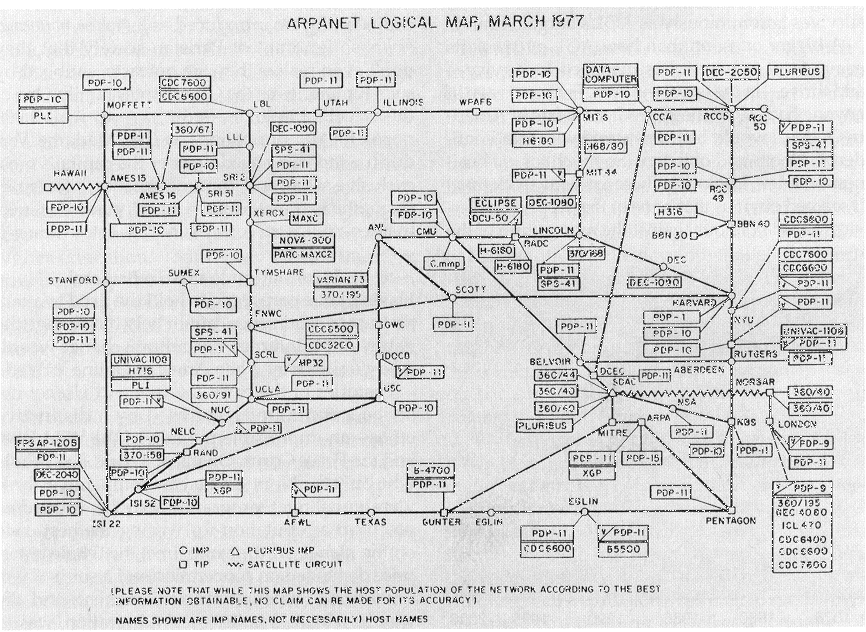
3. Logical ARPANET diagram from March 1977
4. One of the first ARPANET diagrams from September 1969

5. Another ARPANET diagrams from September 1969

6. TCP/IP and the Communications Stack Approach

7. How TCP/IP works.

8. The partial Internet diagram from January 2005.
More maps of the Internet can be found at on http://opte.org
. Each line is drawn between two nodes, representing two IP addresses. The
length of the lines are indicative of the delay between those two nodes.
= = = = = = = = = = = = = = = = = = = = = = = = = = = = = = = = = = = = = = = = = = = = = = = = = = = = = = = = = = = = = = = = = = = = = = = = = = =
Happy 30th Anniversary, Internet and TCP/IP!!!
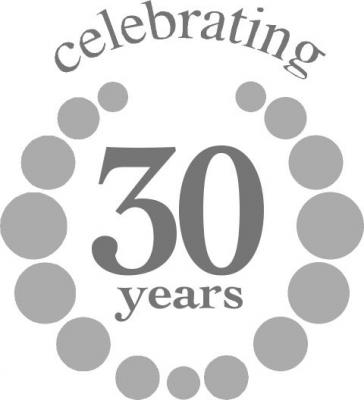
January 1, 1983 - January 1, 2013
= = = = = = = = = = = = = = = = = = = = = = = = = = = = = = = = = = = = = = = = = = = = = = = = = = = = = = = = = = = = = = = = = = = = = = = = = = =
|
Happy 40th Anniversary, ARPANET Team!!! September 2, 1969 - September 2, 2009 |
|||
|
|
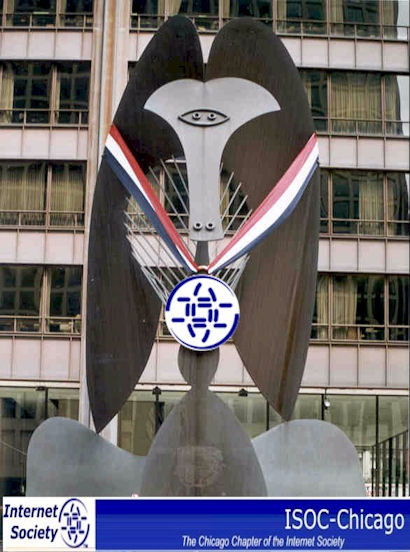 |
||

Click on the thumbnail picture to see |
|||
Happy 40th Anniversary, ARPANET Project Team!!!
from William Slater and the rest of the ISOC-Chicago Chapter.
What your Team started in 1969, changed the World, for better and forever.
We are eternally grateful for your vision, your brainpower, your creativity, and your hard work!
Thank you from all of us here at ISOC-Chicago!!!
Internet History and Growth Presentation - Last Updated on Wednesday, December 29, 2011
= = = = = = = = = = = = = = = = = = = = = = = = = = = = = = = = = = = = = = = = = = = = = = = = = = = = = = = = = = = = = = = = = = = = = = = = = = =
billslater.com (tm)
billslater.com (tm)
Visitor Count
Copyright 1996 -
2017 by
William F. Slater, III,
Chicago, IL, USA
All
Rights Reserved, Nationally and Internationally.
Last Updated: Thursday, January 24, 2019
|